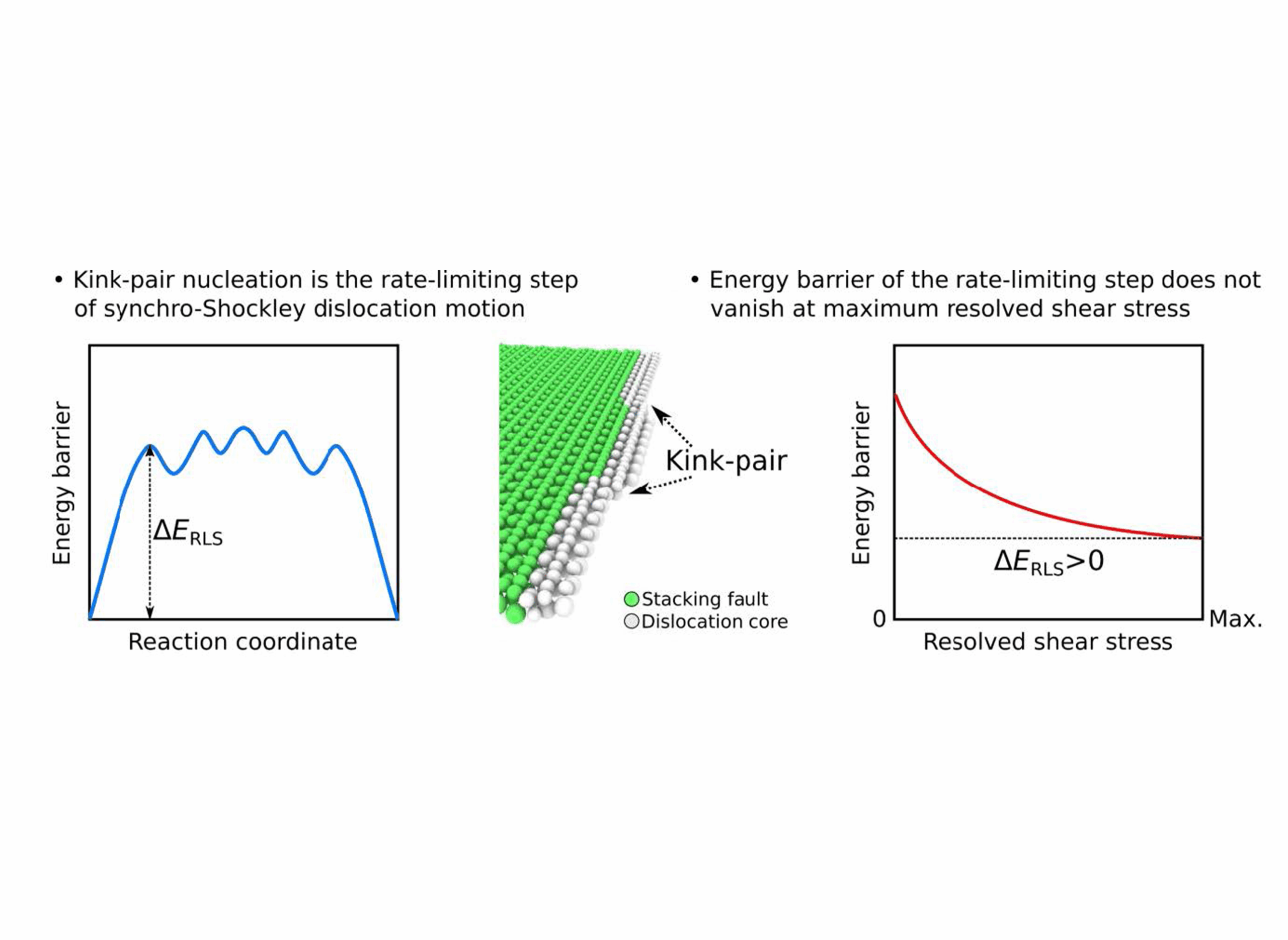Project
Atomistic simulations of plasticity in complex crystals
In the field of materials design and development, scientists have dedicated their efforts to enhance the mechanical characteristics of materials by delving into the intricacies of plastic deformation in recent decades. While the origins of mechanical strength, toughness, and resistance to creep are thoroughly investigated in most metals, there is a notable scarcity of knowledge regarding the properties of complex crystal structures. These intricate intermetallic crystals find extensive application as materials for high temperatures or as reinforcement phases, given their substantial strength even in elevated temperatures, despite their inherent brittleness.
Project Details
Project term
July 1, 2022–July 1, 2023
Affiliations
RWTH Aachen University
Institute
Institute for Physical Metallurgy and Materials Physics
Principal Investigator
Methods
Using atomistic simulations, our objective is to unravel the plastic deformation processes of complex crystal structures. We seek to establish connections between the identified deformation mechanisms in atomistic simulations and the outcomes of micro- and nanomechanical testing. Furthermore, we aim to investigate the impact of local plasticity in fundamental building blocks on the deformation behavior of extensive and intricate unit cells. Large-scale massively parallel atomistic simulations were performed using semi-empirical potentials and cutting-edge machine learning potentials on HPC at RWTH Aachen. The activation events of plasticity, such as dislocation nucleation and propagation, and associated energy profiles were calculated. In addition, density functional theory (DFT) calculations were performed to systematically assess phase stability and possible slip systems across the chemical compositions.
Results
For the first time, we unveiled the mechanisms of motion of zonal dislocations in Laves phases at the atomic scale, and investigated the effects of point defects, such as vacancies and antisite defects, on activation energies and associated mechanisms of their motion. In addition, we demonstrated that the thermal activation nature of zonal dislocations in Laves phases. Their motion involves localized events like kink-pair nucleation, exhibiting small activation volumes. The transition processes of dislocation motion can be divided into shear-sensitive and -insensitive events. The external shear strain lowers the energy barriers of shear-sensitive events. Thermal assistance is indispensable in activating shear-insensitive events, implying that the motion of synchro-Shockley dislocations is prohibited at low temperatures. These findings provide insights into the dependency on temperature and chemical composition of plastic deformation induced by zonal dislocations in Laves phases and the many related topologically close-packed phases.
Discussion
In advanced alloys, the development of brittle topologically close-packed precipitates poses challenges due to their intricate structures and limited knowledge about their plasticity. We focused on the Nb–Co μ-phase as a representative material, presenting a strategy to comprehend and customize the deformability of these complex phases. The plasticity of the Nb–Co μ-phase is influenced by the Laves phase building block within its unit cell. The interplanar spacing and local stiffness variations in the Laves phase building block result in significant reductions in hardness and stiffness, along with a shift from synchroshear to crystallographic slip, as shown by our DFT calculations. Moreover, compositional changes from Nb6Co7 to Nb7Co6 induce substitutions in the Co atoms, transforming the triple layer into a slab of pure Nb. This alteration leads to heterogeneous changes in elasticity and a transition from crystallographic slip to a glide-and-shuffle mechanism, as demonstrated by our DFT calculations. These findings offer prospects for purposefully tailoring the plasticity of topologically close-packed phases in bulk materials by manipulating interplanar spacing and local shear modulus at the atomic scale in fundamental crystal building blocks.
Additional Project Information
DFG classification: 406 Materials Science
Software: LAMMPS, QuantumEspresso, OVITO
Cluster: CLAIX
Publications
Xie, Z., Chauraud, D., Atila, A., Bitzek, E., Korte-Kerzel, S., & Guénolé, J. (2023). Unveiling the mechanisms of motion of synchro-Shockley dislocations in Laves phases. Physical Review Materials, 7(5), 053605.
Xie, Z., Chauraud, D., Atila, A., Bitzek, E., Korte-Kerzel, S., & Guénolé, J. (2023). Thermally activated nature of synchro-Shockley dislocations in Laves phases. Scripta Materialia, 235, 115588.
Luo, W., Xie, Z., Zhang, S., Guénolé, J., Sun, P. L., Meingast, A., … & Korte‐Kerzel, S. (2023). Tailoring the Plasticity of Topologically Close‐Packed Phases via the Crystals’ Fundamental Building Blocks. Advanced Materials, 2300586.
 Thermal assistance is indespansable in activating synchro-Shockley dislocations in Laves phases
Thermal assistance is indespansable in activating synchro-Shockley dislocations in Laves phases